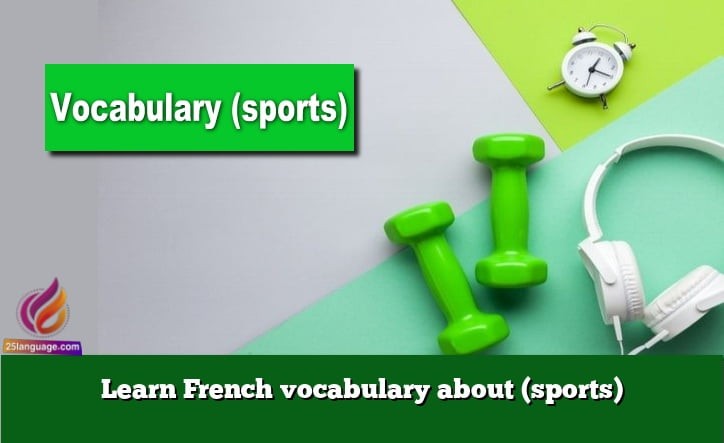Subjunctive Mood in French

Imagine expressing desires, doubts, or emotions in a way that adds depth and nuance to yoru conversations in French. Welcome to the fascinating world of the subjunctive mood! In this lesson, we’ll explore when and how to use this essential grammatical structure, empowering you to convey wishes, uncertainties, and hypothetical situations with confidence. Get ready to unlock the secrets of the subjunctive and elevate your French communication skills to new heights!
Mastering the Subjunctive Mood in French: Understanding Its Nuances
The subjunctive mood in French is used to express doubt, emotion, necessity, or uncertainty. This mood is essential and can substantially change the meaning of sentences. To form the subjunctive, you generally start with the third person plural present tense form of the verb, drop the -ent ending, and then add the specific subjunctive endings, which are -e, -es, -e, -ions, -iez, -ent. critically important verbs to note include *être* (to be), *avoir* (to have), *aller* (to go), and *faire* (to do), as they are commonly used in the subjunctive form. For exmaple:
- Il faut que tu sois prêt. (You have to be ready.)
- J’aimerais qu’il ait un chien. (I would like him to have a dog.)
When using the subjunctive, it is indeed frequently enough introduced by ‘que’ and follows expressions of desire, emotion, or necessity. Additionally, certain conjunctions such as *bien que* (even though), *avant que* (before), and *pour que* (so that) also trigger the subjunctive. Here are a few more examples to clarify these concepts:
- Bien qu’il fasse froid, nous sortons. (Even though it is indeed cold, we are going out.)
- Il travaille dur pour que ses enfants réussissent. (He works hard so that his children succeed.)
| French Example | Grammar Rule | English Translation |
|---|---|---|
| Il est important que nous soyons là. | Emotion/necessity triggering subjunctive | It is indeed critically important that we are there. |
| Je doute qu’il fasse cela. | Doubt triggering subjunctive | I doubt that he will do that. |
| Pour qu’elle réussisse, elle doit travailler. | Conjunction (pour que) triggering subjunctive | In order for her to succeed, she must work. |
Navigating the subjunctive: Practical Applications and Examples
The subjunctive mood in French is used to express doubt,desire,emotion,necessity,or uncertainty.It is indeed predominantly found in dependent clauses initiated by certain conjunctions or verbs. To effectively navigate the subjunctive, one should be familiar with these key situations that trigger its use:
- Expressions of desire: Je souhaite que (I wish that)
- Expressions of necessity: Il faut que (It is indeed necessary that)
- Emotion: Je suis content que (I am happy that)
- Uncertainty: Je doute que (I doubt that)
When constructing the subjunctive, the present tense form is typically made from the third-person plural form of the present indicative (remove -ent) plus the subjunctive endings: -e, -es, -e, -ions, -iez, -ent. Such as:
| French Example | Rule | English Translation |
|---|---|---|
| Je veux que tu fasses tes devoirs. | Desire + Subjunctive | I want you to do your homework. |
| Il est important que nous soignions notre environnement. | Necessity + Subjunctive | It is indeed critically important that we care for our environment. |
| Je suis triste que vous partiez. | Emotion + subjunctive | I am sad that you are leaving. |
| Je crains qu’il ne vienne. | Uncertainty + Subjunctive | I fear that he won’t come. |
Exploring the Subjunctive Mood: From Theory to Real-Life Usage
The subjunctive mood in French is used to express doubt, desire, emotion, necessity, or uncertainty. It frequently enough appears in dependent clauses introduced by certain conjunctions or expressions.Here are some key rules to remember:
- the subjunctive is typically triggered by verbs or expressions that convey emotion, desire, or doubt.
- Common triggers include phrases like “Il faut que” (It is necessary that), “Je souhaite que” (I wish that), and “Bien que” (Although).
- To form the subjunctive,take the present tense ‘ils’ form of the verb,drop the ‘-ent’,and add the appropriate endings: -e,-es,-e,-ions,-iez,-ent.
For example, using the verb ”parler” (to speak), we have: “Il faut que je parle“ (It is indeed necessary that I speak). In contrast, with “être” (to be), we say: “Bien que je sois fatigué” (Although I am tired). Notice how the subjunctive forms differ from the indicative.Below is a table summarizing some examples, verbs, and thier translations:
| French Example | English Translation |
|---|---|
| Je souhaite que tu réussisses à l’examen. | I wish that you succeed in the exam. |
| Il est critically important que nous faisions nos devoirs. | It is important that we do our homework. |
| Bien qu’il pleuve, nous allons sortir. | Even though it is indeed raining, we are going out. |
Unlocking the Subjunctive: Tips and Techniques for Fluent Expression
The subjunctive mood in French is essential for expressing doubt, desire, necessity, and emotion. unlike the indicative mood, which states facts, the subjunctive conveys subjective attitudes.The subjunctive is typically used after certain conjunctions or verbs, such as “il faut que” (it is necessary that), “bien que” (although), and “vouloir que” (to want that). Here are some examples:
- il faut que tu sois prêt. (it is indeed necessary that you are ready.)
- Bien qu’il fasse froid,je sortirai. (Even though it is indeed cold,I will go out.)
- Je veux que tu viennes avec moi. (I want you to come with me.)
To form the subjunctive, start with the third person plural form of the present indicative, drop the -ent ending, and add the appropriate subjunctive endings: -e, -es, -e, -ions, -iez, -ent. it is important to remember irregular verbs, as they may not follow these patterns. Common irregular verbs include:
| French Verb | Subjunctive Form | English Translation |
|---|---|---|
| Être | sois, sois, soit, soyons, soyez, soient | to be |
| Avoir | aie, aies, ait, ayons, ayez, aient | to have |
| Aller | aille, ailles, aille, allions, alliez, aillent | to go |
| Faire | fasse, fasses, fasse, fassions, fassiez, fassent | to do/make |
The Conclusion
nous avons exploré ensemble le mode subjonctif en français, un outil puissant qui enrichit notre expression. Nous avons vu que le subjonctif est utilisé dans des situations qui expriment des souhaits, des doutes, des émotions et des actions incertaines. Nous avons également abordé les principales structures grammaticales et les verbes régulés qui déclenchent son utilisation.
N’oubliez pas que la maîtrise du subjonctif demande de la pratique et de la patience. Ne soyez pas découragés par les nuances de ce mode ! Utilisez-le pour exprimer vos envies, vos doutes ou vos sentiments, et vous verrez à quel point votre niveau de français s’améliore.
Pour appliquer ce que vous avez appris, essayez d’intégrer le subjonctif dans vos conversations quotidiennes ou dans vos écrits. Écoutez des chansons, regardez des films en français, et cherchez des exemples concrets. L’apprentissage d’une nouvelle langue est un voyage, et chaque instant passé à pratiquer vous rapproche de la maîtrise.
Rappelez-vous, chaque effort compte et vous êtes sur la bonne voie pour devenir des communicateurs compétents en français. Allez-y, osez utiliser le subjonctif—vous serez surpris de l’impact que cela aura sur vos compétences linguistiques ! Bonne chance et amusez-vous bien dans votre apprentissage du français !





























